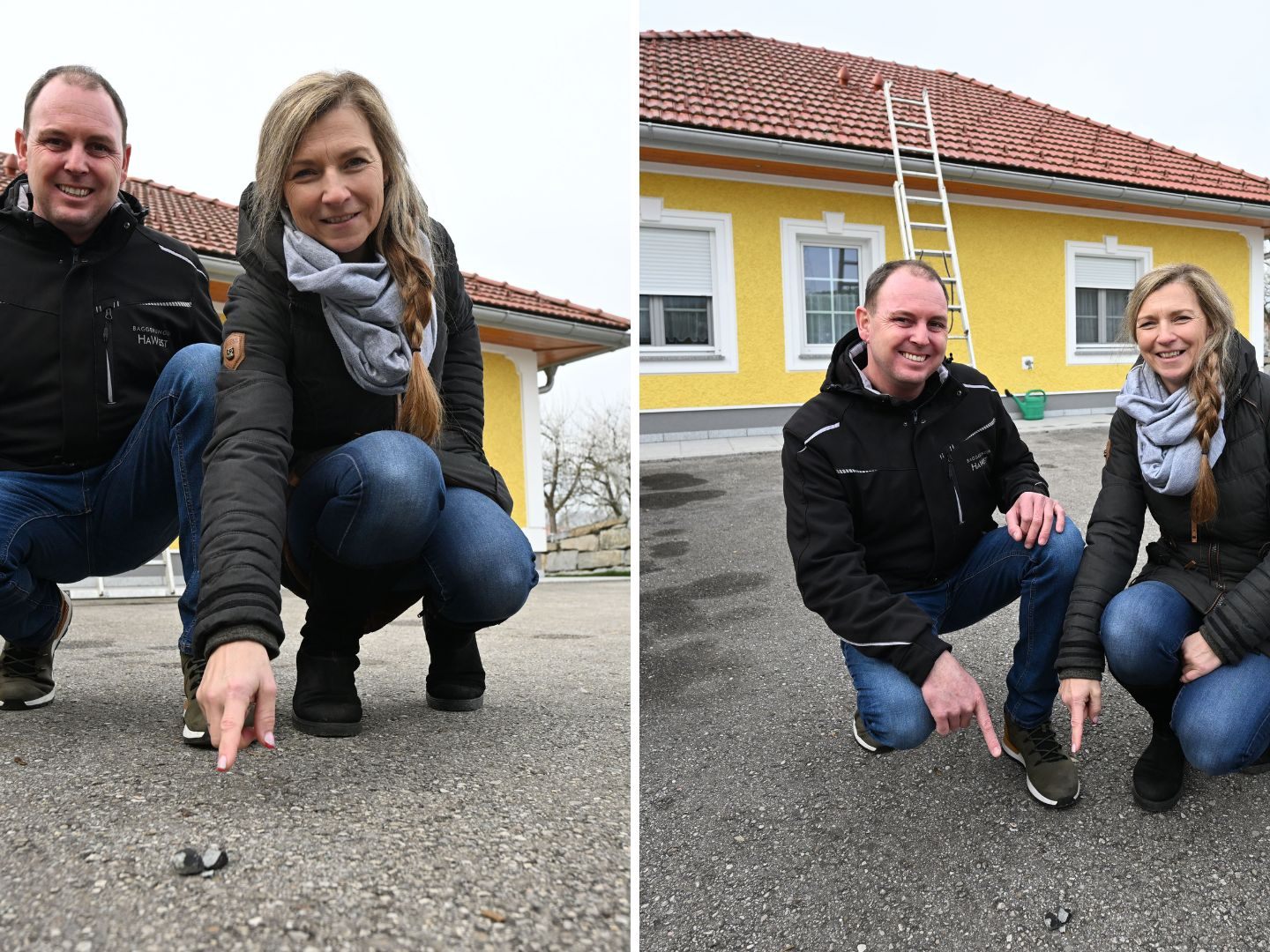House Roof in Lower Austria Hit by Meteorite Fragment

After the first fragment finds in November, further pieces of the cosmic visitor were now found: The original fragment landed on the roof of a single-family house and its fragments thus became the very rare "Hammerstone", as experts and finders explained to media representatives.
Finds of Meteorite Fragments Very Rare
Finds of meteorite fragments are extremely rare in Austria. For example, one such fell over the Styrian Kindberg in November 2020. A 233 gram heavy chondrite could be recovered the following year. It was the first such find in the federal territory since 1977. The then curator of the meteorite collection of the Natural History Museum (NHM) Vienna, Ludovic Ferrière, spoke of a "sensation for Austria".
Based on data from camera observation systems, Czech experts were able to precisely narrow down the search corridor after the fall of the "Haag Meteorite" in autumn very quickly. Already at the beginning of November, the first pieces with the characteristic charred, dark colouring were found in Mostviertel. They have since been primarily examined by German researchers.
Now there is a welcome addition: In the area with the best chances of finds, the head of the NHM mineral collection, Vera Hammer, and impact researcher Ferrière set out on Sunday (December 29, 2024) to inform residents in detail about the events on October 24. The trip quickly led to success, as was explained at the find site on Thursday.
"Immediately Clear That It Was Meteorite Pieces"
Already during the third conversation on site, Hammer and Ferrière were, so to speak, successful: The Westermayr family, who live in Haag, were able to present suspicious stones with a total weight of 28.61 grams. "It was immediately clear that these were pieces of meteorite," said Ferrière.
The impact and find history turned out to be even more exotic. The fact that it clearly has a reddish spot from contact with a roof tile on the surface makes the find Austria's first "Hammerstone". If a meteorite hits a structure built by humans during its impact, it meets the Hammerstone criteria. Vera Hammer: "This is indeed a sensation."
Such hammer stones are accordingly extremely rare - and therefore very much in demand. In Haag, near the Westautobahn, the cosmic visitor was flung onto the asphalt driveway of the family after making contact with their roof, where it broke into two larger and several very small pieces.
Meteorite Pieces: Confirmation on Thursday
The Westermayr family found the small chunks from space shortly after the fireball, which the family itself had not observed, as they explained to the APA. At first, the two events were not linked. But when numerous meteorite hunters from several countries arrived and started searching in the area, the family retrieved the pieces from the spot near their chicken coop, where they had initially deposited the fragments.
"We had already talked with friends about whether it was 'something' or not." But the fact that they were indeed pieces of the meteorite was finally confirmed by Hammer and Ferrière on Thursday. This also triggers a finder's reward in the form of a meal invitation, as promised by the mayor of Haag, Lukas Michlmayr (ÖVP), shortly after the fireball, as he explained on site. Michlmayr also asked any further meteorite seekers in the region to respect the rights of the respective property owners.
What Happens to the Fragments?
Whether the fragments will ultimately end up in the NHM is not yet clear. However, initial examinations of one of the small pieces are now underway there, explained Ferrière, who could not yet make an exact determination, but classified the find as part of the "Ordinary Chondrites" group with a slight metal content. The finders are not yet entirely sure how they will proceed with the find: There are a few options, "but it will stay in Austria", they said.
It could well be that there are still more fragments in the area. The original asteroid - which only becomes a meteorite when it enters the atmosphere - could have had a diameter "slightly below that of a football" before entering it, Ferrière suggested. The calculations of the impact corridor, based on now 65 reports from various parts of Central Europe, could become even more accurate with further finds, Hammer explained. The chances of this are intact, hence the initiative around the holidays to remind the local people "that there might still be something to find", emphasized the NHM researcher.
(APA/Red)
This article has been automatically translated, read the original article here.





